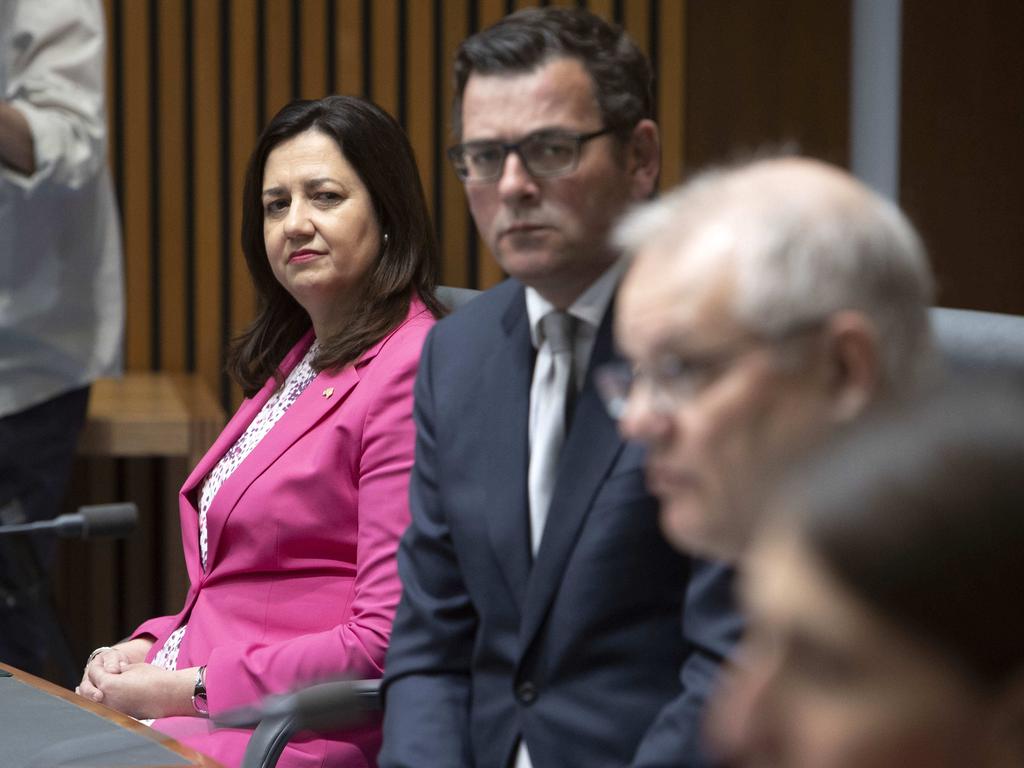
Of course such assumptions come with an important caveat: the election could still be more than six months away and a lot can change. And increasingly Covid problems just might erode confidence in this government as it chases a difficult fourth term in office. But governments in Australia usually win the close elections, we know that, and judging by the polls the next election will be close.
For Labor to assume favourite status it would need to extend its wafer thin lead on the two party vote. So far that hasn’t happened during this entire term of parliament, and the nation over at state and territory levels we have seen incumbent governments re-elected.
Albanese knows that he is butting up against these barriers, but he hopes that a campaign will give him the chance to highlight Coalition failures in a way voters so far have been prepared to forgive.
While Coalition strategists aren’t taking anything for granted, they are confident. With their fundraising, with their seat-by-seat sandbagging capacities at the micro level, and with the ability of Morrison to out campaign Albanese on the macro national stage.
To be sure, new uncertainties have been added into the mix. The return of Barnaby Joyce as Nationals leader and deputy PM, plus the Sydney lockdown and its flow on effects around the country. But this latest poll includes people’s perceptions post the Victorian lockdown, since the return of Joyce, and the data was being collected as Sydney began its trajectory towards a possible lockdown.
It therefore suggests Morrison can withstand such issues. In short, its seems like a sizeable chunk of voters are locked into re-electing the government that got them through the worst of the pandemic in 2020, notwithstanding pandemic wobbles in 2021.
What the closeness of the polls also highlights is that unless something dramatically changes between now and election day, Australia may be on track for another hung parliament. The last time that happened was 2010 when Julia Gillard managed to cobble together a viable government.
This could be the sleeper issue that becomes central to any analysis as election day gets closer.
With the Coalition going into this election needing to win back seats like the southwestern Sydney electorate of Hughes to secure majority government, and Labor needing to win a total of nine seats off the Coalition to get to majority government (assuming it doesn’t lose any along the way), it is a distinct possibility that both sides of politics fall short of their goals before going cap in hand to the crossbench to beg for support.
The crossbench is diverse and could easily include half a dozen MPs, maybe more, divided roughly equally between Labor and Coalition as to which side of politics they are more likely to support in government. Only Andrew Wilkie and Adam Bandt are certain to go with Labor. The likes of Zali Steggall, Rebekha Sharkie and Helen Haines all represent traditionally Liberal Party electorates, but all three dislike the conservative way of doing business. Bob Katter is clearly more likely to fall into line with the conservative side of politics, but he has always been a mate of Kevin Rudd, who Albanese is close to. So even Katter’s support can’t be taken for granted.
If the parliament does become hung post the election, the negotiating process thereafter will be a wild ride. As will the entire next term for whoever is in office.
Peter van Onselen is the Political Editor at Network 10 and a professor of politics and public policy at the University of Western Australia and Griffith University.







Today’s Newspoll confirmed what we already knew: The Coalition’s primary and two party support is stubbornly high despite problems with the vaccine rollout and hotel quarantine. Equally, Scott Morrison’s dominance over Anthony Albanese as the better PM is such that, closer to an election, undecided voters are more likely to break the government’s way than shift their support to the opposition.